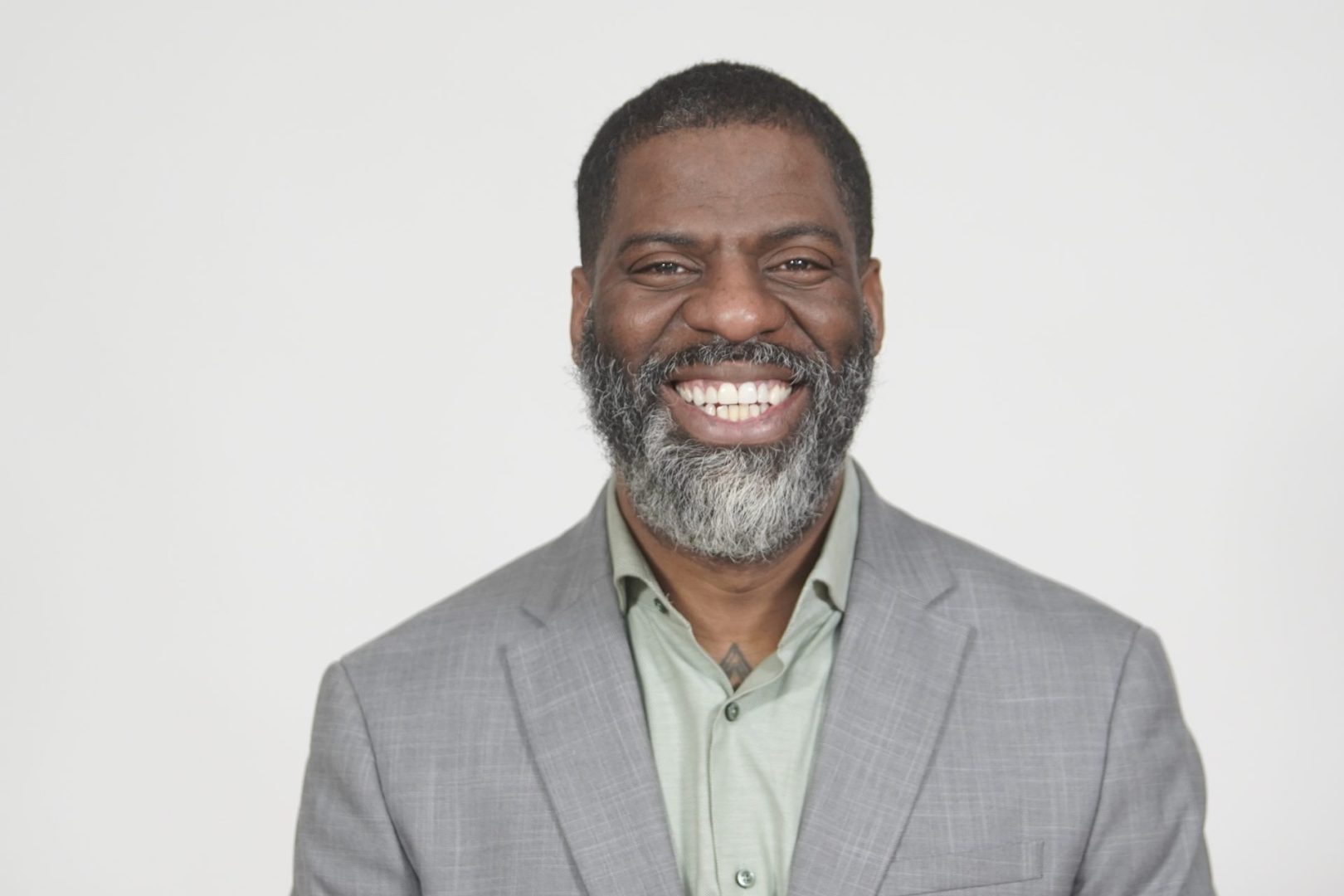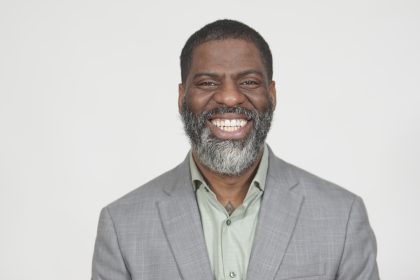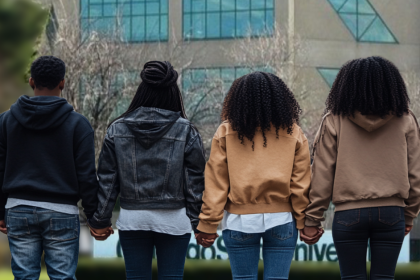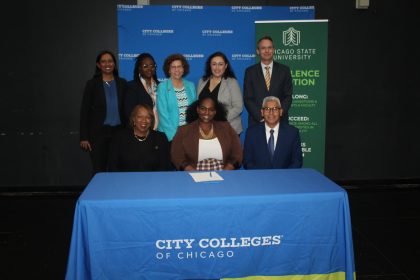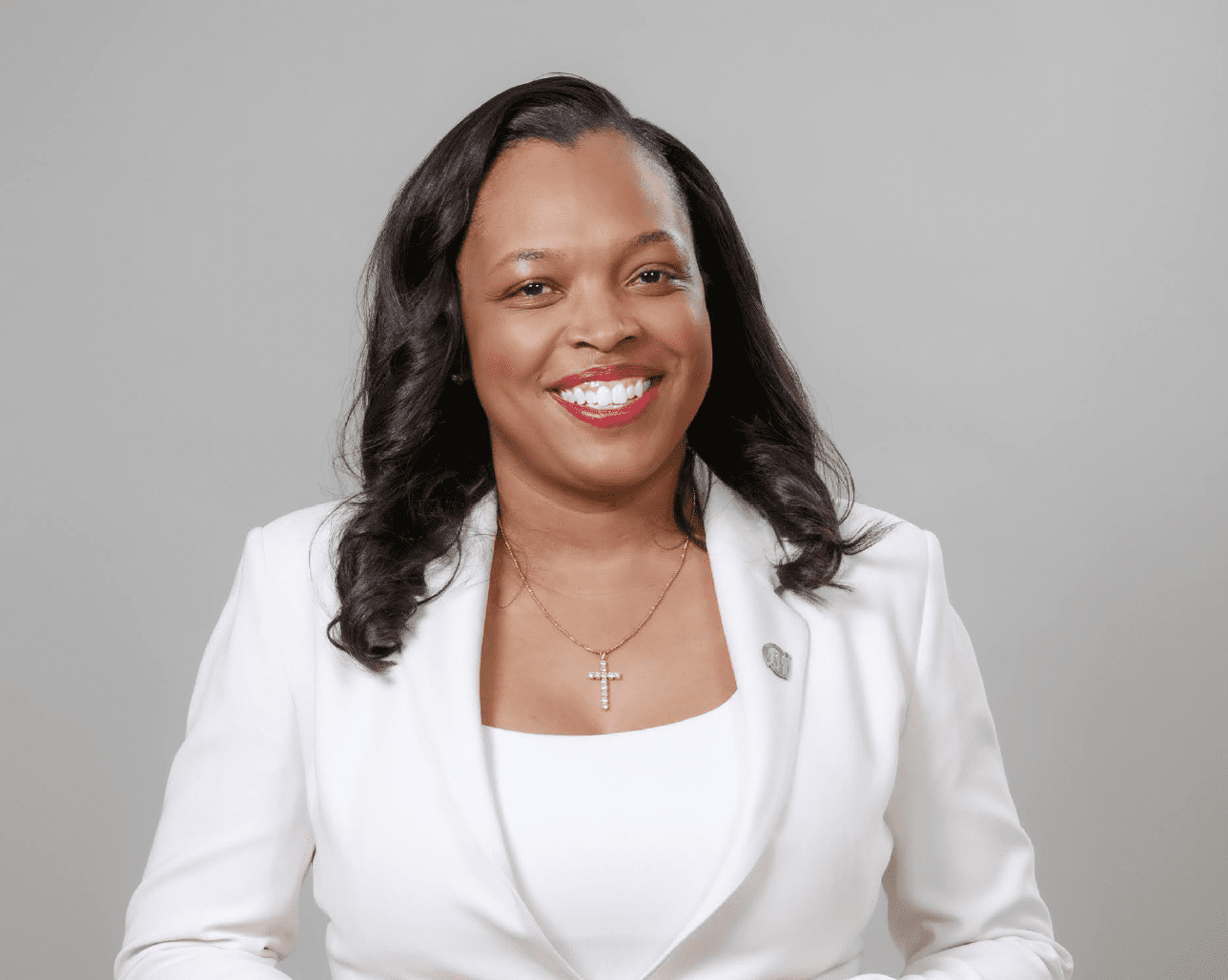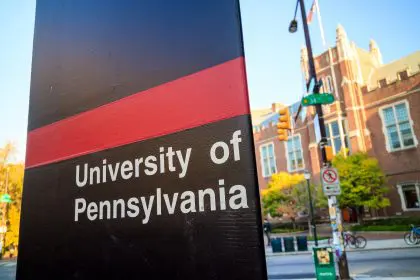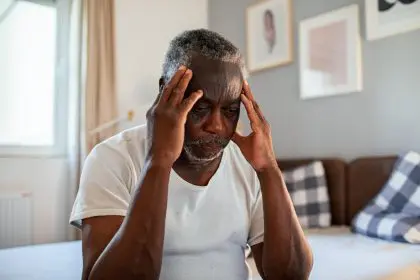As the newest member of Chicago’s elected school board, Dr. Che “Rhymefest” Smith isn’t just changing policies, he’s redefining what education leadership can look like when informed by artistic sensibilities and lived experience.
Walking through the hallways of O’Keeffe Elementary in South Shore, Dr. Che “Rhymefest” Smith points out the piano lab and rehearsal spaces where students learn alongside instructors from the Joffrey Ballet. It’s a stark transformation for a school that once inspired fear rather than aspiration in the surrounding community.
“When I was young I was scared to walk past that school let alone go to it,” Smith admits. Yet today, O’Keeffe exemplifies the kind of educational renaissance he envisions across Chicago Public Schools, one where arts, practical skills, and academic rigor create pathways to success that weren’t available during his own troubled journey through the same system.
From rhymes to reform
Smith’s transition from Grammy-winning songwriter to education advocate wasn’t a career pivot but rather the natural evolution of his lifelong commitment to community transformation. As a product of CPS who found himself academically adrift in high school, Smith brings a uniquely personal perspective to his role on the school board.
“My talents and my gifts weren’t being spoken to,” he recalls of his high school experience. “When I began falling behind academically, there was no support and I fell behind so much that when I went to the principal, the dean, and I said, what do I have to do to graduate? He said, ‘You gotta go to school for another three to four years.'”
This experience of being “warehoused” rather than educated drives Smith’s approach to his new role, where he speaks with the cadence and conviction that made him a successful artist. The skills that earned him a Grammy for co-writing “Jesus Walks” with Kanye West now serve him in crafting compelling narratives about educational possibilities.
Collaborative composition in education
Musicians understand that great compositions require harmonizing diverse elements. Smith brings this collaborative mindset to education reform, emphasizing connection over creation.
“It’s not for me to recreate the wheel or create something new and look what I did,” he explains. “This is what’s beautiful about this opportunity to serve on Chicago Public School Board. I get to work with organizations who have already been engaged in that work of innovating.”
Smith highlights programs already making measurable impacts:
- The Black Student Success Plan launched in February with wraparound services and apprenticeship opportunities
- CHAMPS Mentoring and its restorative justice practices
- Chicago State’s “Grow Your Own” and “Call Me Mr.” initiatives training young Black men to become teachers
- The Obama Foundation’s My Brother’s Keeper program
“All I have to do is attach my platform, attach my energy and attach my service to the people in our community who have already been making those innovative efforts,” Smith says, employing the collaborative approach familiar to anyone who has worked in a recording studio.
Changing the system’s structure, not just its sound
While Smith celebrates programmatic innovations, he’s equally focused on structural reform, particularly challenging Chicago’s corporate approach to school leadership.
“Why are we defining the head of CPS as a CEO? No district in the state of Illinois, and I can’t think of any district in the country besides Chicago, defines its head of schools as a CEO,” Smith says, his voice rising with the rhythmic emphasis of a practiced performer. “These schools, to me, are not businesses and our children are not commodities, even though we deal with a $10 billion budget.”
Smith is drafting a resolution to amend state code, requiring the head of Chicago Public Schools to be a superintendent with educational experience. It’s a challenge to a 35-year precedent that, in his assessment, has left the district with an $800 million deficit and persistent inequities.
“That head of schools is so important because that’s where I get my information from to make decisions based on the numbers they give me,” he explains. “That person should have a value system based on education.”
The performance of presence
Just as artists understand the power of showing up for audiences, Smith believes physical presence in schools is transformative. He visits campuses that have never before received a board member, listening directly to students and teachers.
“I visit schools who have never seen a board member ever come to their school and ask questions about what you need or what kind of support would best help these students academically,” he says.
This approach yields actionable intelligence, like learning about an airplane hangar at Chicago Vocational Academy that students hope to revitalize for aviation training. By being present, Smith gathers the community expertise needed to inform policy decisions.
“The community already has the answers. The children already have the answers,” he insists. “What am I doing? I’m showing up.”
Composing hope through consistent practice
Musicians understand that mastery comes through disciplined, repetitive practice. Smith applies this principle to community transformation, emphasizing consistency over flashy innovation.
“I found lasting impact in organically showing up and doing the work, doing the work authentically. Chop wood, carry water, chop wood, carry water,” he says, referencing the Zen proverb about enlightenment through mundane tasks.
For Smith, hope isn’t an abstract feeling but rather “a terrestrial word for prayer. It is a surface word for intention.” The transformation he’s witnessed in schools like O’Keeffe represents hope made tangible through collaborative, consistent effort.
“The hope is your energy to join and to collaborate,” he explains. “Hope is intentional work, hope is the prayer and hope is the action of service.”
Just as artists must practice daily to maintain their craft, Smith believes educational transformation requires sustained engagement rather than episodic interest. “Everyone has a responsibility. Everybody has an obligation to participate in the hope,” he says. “If you don’t, if we don’t, then there’s no hope.”
In applying his artistic sensibilities to education reform, Smith demonstrates how creative approaches might address persistent challenges in urban education. His rhythm-infused rhetoric and collaborative instincts offer a fresh counterpoint to technocratic approaches, suggesting that perhaps what Chicago’s schools need isn’t just better management, but a more inspired composition.

